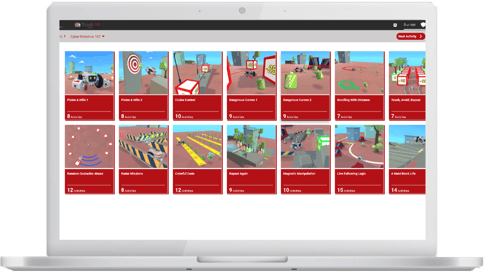Learn how four instructors are keeping students on track using remote learning environments

Growing numbers of colleges and universities are shuttering their doors to mitigate the spread of COVID-19. In turn, educators have had to respond by taking their courses online within a matter of days. Many of them lack experience teaching online and are now scrambling to figure out how to make remote classes work for their courses.
The good news: Online teaching and learning can be just as effective as an in-person classroom. We talked to several educators who were able to respond quickly to school shutdowns and move their classes online. They shared their tips and best practices on how to do so successfully.
Be present with the right tools
Whether you’re using remote conferencing software like Zoom or Google Hangouts to live-stream your lectures or post slides in an online classroom, your personal teaching style can get muddled, especially if you are used to interacting regularly with your students. The divide between students and professors can become heightened in online classes, making it all the more important to ensure you remain accessible and within easy reach.
Since his classes were moved online, Bobby Butler Jr., lecturer in the Supply Chain and Logistics Technology Department at the University of Houston, has been running Zoom-recorded lectures and managing an open discussion forum on Top Hat to mimic the in-person class environment. This allows students to see and hear him, ask clarifying questions, and comment on course material throughout the lecture. “One of my classes is 90 percent seniors who are graduating this year and need this class to get their degree,” Butler Jr. said. “I’m doing everything I can to make sure they get there.”
Approach online teaching with a learning mindset
For many educators, the prospect of moving their classes online is daunting—but how you embrace it will make all the difference.
Paul Cooper, a lecturer in the Department of Chemistry at Yale University, believes that a positive attitude is key. “With an open mind, it’s all possible,” he said. “Yes, there is a learning curve for instructors who have never used classroom technology before, but it’s also an important opportunity to become a better educator.”
Since moving his courses online, Cooper has been challenged with figuring out how to account for in-class lab activities he would normally run in his Physical Chemistry course. With a little bit of ingenuity and willingness to try something new, he’s now developing supplementary assessments delivered through Canvas, a learning management system (LMS), and ensures students can easily engage with him through Zoom.
Stay organized
Nicole McNichols, lecturer in the Psychology Department at the University of Washington, streamlines the online experience by storing all recorded lectures, discussions, and homework assignments on the Top Hat platform. With everything in one place, McNichols is able to connect the dots between homework completion and content comprehension, with data-driven insights based on student performance. “This way I can see what they’re struggling with and stay in touch with them,” said McNichols. “I can follow up with them and answer their questions, almost like I’m actually with them.”
McNichols recommends organizing your online course in a methodical way to ensure that it is intuitive to navigate. Students should be able to progress through course content easily so that their attention remains focused on learning the material, rather than searching for specific content.
Embrace the benefits of technology
“Gen Z wants us to keep things active in the classroom,” said Eric Davis, an associate professor of Sociology at Bellevue College. Technology can help ensure that students stay engaged and participate in active learning before, during, and after class—regardless of whether they’re learning within a physical classroom or remotely from home.
For example, before class, students can read assigned chapters from digital textbooks that incorporate interactive elements to encourage engagement with the subject matter. During class, you can encourage student participation through online discussion forums. After class, you can assign homework on a teaching platform with auto-grade capabilities.
For two of his classes, Davis has assigned readings from print textbooks. To facilitate online discussion, he uses Canvas. Davis also teaches a couple of classes that use the Top Hat platform, assigning readings from a digital textbook and facilitating online lectures, discussions, and quizzes. “None of these students are worried about the school closure because they know they’ll be able to finish out the semester,” he said.
It’s easy to feel overwhelmed when making the move to an online classroom. With so many platforms, tools, and techniques, uncovering the best way to connect with your students can be daunting. But the good news is that many edtech providers are stepping up to offer their services for free, to help mitigate potential challenges associated with moving classes online.
For example, Top Hat is offering its platform free of charge for the rest of the semester to support educators who have current, active classes. With all of this support, educators have a great opportunity to practice teaching and learning skills in a new or different environment help build grit in today’s students, as well as strengthen the technical prowess of modern educators.
And just as importantly, according to Davis, “the ability to pivot quickly is essential for the next school term and the foreseeable future.”

Keep learning during COVID-19 with RobotLAB and CoderZ!
CoderZ is an online educational environment that improves students 21st century skills, while they are having fun programming their own virtual cyber robot. CoderZ and RobotLAB has different lessons to do at home! Check them out and keep learning!


